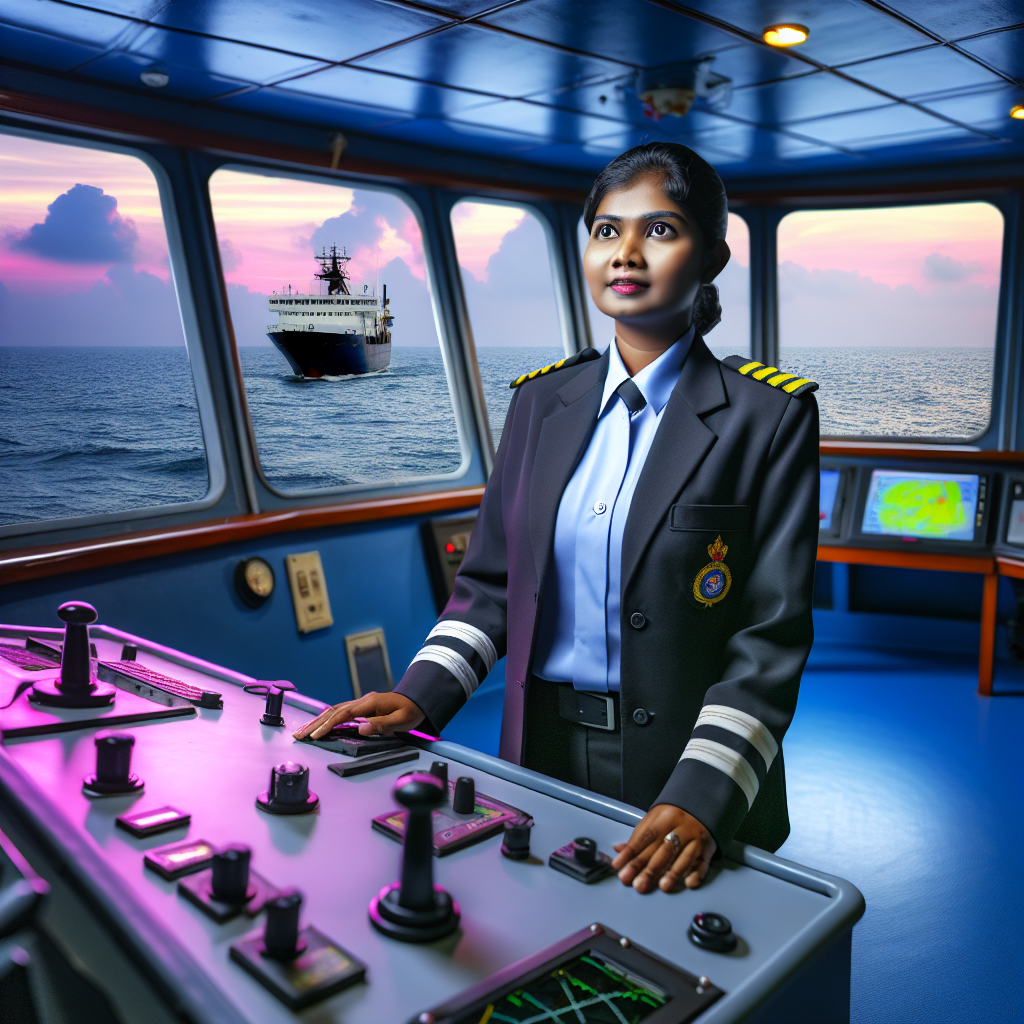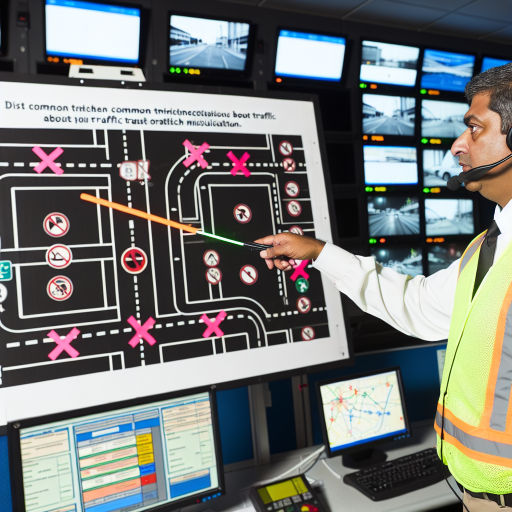Introduction:
Maritime piloting plays a crucial role in the shipping industry by guiding vessels safely through various waterways.
Recent technological advancements in this field have revolutionized the way pilots navigate and operate ships.
Looking ahead, we can expect further developments that will enhance safety, efficiency, and overall performance in maritime piloting.
Automation and Artificial Intelligence:
One of the key areas that we can expect to see significant advancements in is the integration of automation and artificial intelligence technologies.
These innovations will enable ships to navigate more autonomously, reducing human error and improving overall safety.
Pilots will be able to rely on advanced systems that provide real-time data and predictive analytics to make informed decisions.
Remote Monitoring and Control:
Future technological advances in maritime piloting are likely to include remote monitoring and control capabilities.
This will allow pilots to oversee and operate ships from a distance, increasing efficiency and flexibility.
With the use of advanced sensors and communication systems, pilots will have better control over navigation and maneuvering processes.
Enhanced Communication Systems:
Improved communication systems will play a crucial role in the future of maritime piloting.
Enhanced connectivity will enable seamless coordination between pilots, vessels, and shore-based facilities.
This will result in smoother operations, faster response times, and better situational awareness for all stakeholders involved in the shipping process.
Environmental Sustainability:
Future technological advancements in maritime piloting will also focus on environmental sustainability.
Innovations such as eco-friendly propulsion systems, energy-efficient technologies, and waste management solutions will be integrated to reduce the environmental impact of shipping operations.
Pilots will be equipped with tools to navigate in a more environmentally conscious manner.
The future of maritime piloting holds exciting possibilities as technology continues to advance.
With a focus on automation, remote monitoring, enhanced communication, and environmental sustainability, we can expect safer, more efficient, and environmentally friendly shipping practices in the years to come.
History of maritime piloting technology:
- Brief history of traditional methods used in maritime piloting.
- Introduction of electronic navigation systems in the late 20th century.
- Evolution of technology in maritime piloting over the years.
Maritime piloting has a long history dating back to ancient times when sailors relied on the stars, landmarks, and primitive navigation tools to navigate the seas.
Traditional methods like dead reckoning, celestial navigation, and compass bearings were used to plot courses and avoid hazards.
In the late 20th century, a significant shift occurred with the introduction of electronic navigation systems to assist mariners in their piloting endeavors.
Transform Your Career Today
Unlock a personalized career strategy that drives real results. Get tailored advice and a roadmap designed just for you.
Start NowGPS, radar, sonar, and electronic charting systems revolutionized how ships navigate the oceans, making navigation more accurate and efficient.
As technology continued to advance, maritime piloting saw a rapid evolution with the integration of automated systems, artificial intelligence, and remote monitoring capabilities.
These advancements have enhanced safety, efficiency, and sustainability in maritime operations, leading to reduced risks and improved navigation outcomes.
Future trends in maritime piloting technology:
- Integration of autonomous vessels and drone technologies.
- Enhanced data analytics and predictive modeling for route optimization.
- Development of augmented reality systems for enhanced situational awareness.
- Implementation of blockchain technology for secure data sharing and transparency.
The future of maritime piloting technology is poised for exciting developments, with the integration of autonomous vessels and drone technologies expected to play a significant role in transforming the industry.
These technologies offer the potential for reduced human errors, improved operational efficiency, and cost savings for shipping companies.
Enhanced data analytics and predictive modeling will enable mariners to optimize routes, reduce fuel consumption, and minimize environmental impact.
By leveraging big data and real-time information, ships can navigate more efficiently, avoiding congestion and adverse weather conditions to ensure timely arrivals at ports.
Augmented reality systems are also on the horizon, providing mariners with enhanced situational awareness through real-time data overlays on navigation displays.
This technology can improve the decision-making process, increase safety, and reduce the cognitive workload on bridge crews during complex maneuvers.
Blockchain technology is another area of interest for maritime piloting, offering secure data sharing and transparency in transactions between stakeholders.
By implementing blockchain solutions, shipping companies can streamline documentation processes, track cargo movements, and enhance trust and accountability in the supply chain.
Challenges and opportunities in adopting new technologies:
- Integration with existing systems and infrastructure.
- Training and upskilling of maritime personnel.
- Cybersecurity concerns and data privacy issues.
- Regulatory compliance and industry standards.
While the adoption of new technologies in maritime piloting presents numerous benefits, there are also challenges that need to be addressed.
Integrating these technologies with existing systems and infrastructure can be complex and require significant investments in time and resources.
Training and upskilling of maritime personnel is essential to ensure they are equipped to operate and maintain these advanced systems effectively.
Continuous education and training programs are crucial to harness the full potential of new technologies and maximize their benefits in improving operational efficiency and safety.
Cybersecurity concerns and data privacy issues are also critical considerations in the adoption of new technologies.
As ships become more connected and reliant on digital systems, the risk of cyber threats and data breaches increases, requiring robust cybersecurity measures.
Regulatory compliance and industry standards play a vital role in shaping the adoption and implementation of new technologies in maritime piloting.
Regulations need to keep pace with technological advancements to ensure safe and sustainable practices in the maritime industry.
Industry standards help establish best practices and guidelines for the effective use of emerging technologies.
Transform Your Career Today
Unlock a personalized career strategy that drives real results. Get tailored advice and a roadmap designed just for you.
Start NowCurrent Technological Advancements in Maritime Piloting
Maritime piloting has seen significant technological advancements in recent years.
These innovations have drastically improved efficiency, safety, and overall operations in the maritime industry.
Here are some of the current technological advancements in maritime piloting:
- GPS technology for precise navigation
- Automated identification systems for vessel tracking
- Collision avoidance systems for enhanced safety
- Integration of artificial intelligence and machine learning in piloting
GPS technology has transformed maritime piloting.
This technology provides accurate positioning and navigation for vessels.
Ships can pinpoint their exact location, plan routes more efficiently, and navigate through complex waterways with precision.
GPS has significantly enhanced the reliability and accuracy of maritime navigation.
This reduces the risk of accidents and improves overall operational efficiency.
Automated Identification Systems (AIS) have become essential tools for vessel tracking and identification.
AIS enables ships to automatically broadcast their identity, position, speed, and course information to other vessels and shore stations.
This real-time tracking system enhances communication, coordination, and situational awareness among ships.
It improves overall safety and operational efficiency in crowded maritime environments.
Collision avoidance systems utilize advanced sensor technologies and algorithms to detect potential collision risks.
These systems provide early warnings to ship operators.
They analyze data from radar, AIS, GPS, and other sensors to assess the surrounding environment.
By alerting crew members to potential dangers, these systems enhance safety and reduce the risk of accidents.
They also help prevent costly maritime incidents.
The integration of Artificial Intelligence (AI) and Machine Learning (ML) technologies in maritime piloting has opened up new possibilities.
AI-powered systems analyze vast amounts of data, predict vessel behavior, and optimize routes.
They make real-time decisions to improve efficiency and safety.
Transform Your Career Today
Unlock a personalized career strategy that drives real results. Get tailored advice and a roadmap designed just for you.
Start NowLeveraging AI and ML capabilities, maritime operators enhance decision-making processes.
They can mitigate risks and streamline operations in a rapidly evolving maritime landscape.
The ongoing technological advances in maritime piloting are reshaping the future of the industry.
By harnessing the power of GPS technology, AIS, collision avoidance systems, AI, and ML, maritime operators can navigate more safely and efficiently.
As these technologies continue to evolve and integrate further, we can expect even greater improvements in maritime piloting practices.
Ultimately, these advancements will ensure a safer and more efficient maritime transportation system.
Learn More: Leadership Qualities of Successful Distribution Managers
Development of autonomous ships and remote piloting
Autonomous ships are on the rise, reducing the need for onboard pilots.
Remote piloting allows operators to control ships from a shore-based facility.
This trend improves safety, efficiency, and reduces human error in maritime operations.
Advancements in AI and sensor technology enable autonomous navigation in complex maritime environments.
Regulations are being developed to govern the use of autonomous ships to ensure safety standards.
Predictive analytics for improved route planning and fuel efficiency
Predictive analytics use data to forecast optimal routes for ships to minimize fuel consumption.
This technology considers factors like weather patterns, currents, and traffic to optimize routes.
By analyzing historical data, predictive analytics can predict maintenance needs and avoid breakdowns at sea.
Ships equipped with this technology can navigate more efficiently, reducing costs and environmental impact.
Integration of predictive analytics with autonomous systems can further enhance ship performance and safety.
Implementation of blockchain technology for enhanced security and transparency
Blockchain technology ensures secure and transparent data sharing among stakeholders in the maritime industry.
It provides a tamper-proof record of transactions, improving accountability and reducing fraud risks.
Using blockchain can streamline processes like cargo tracking, crew certification, and port operations.
Transform Your Career Today
Unlock a personalized career strategy that drives real results. Get tailored advice and a roadmap designed just for you.
Start NowSmart contracts enabled by blockchain automate transactions, reducing paperwork and processing time.
This technology enhances trust between involved parties and can revolutionize supply chain management in the maritime sector.
Virtual reality and augmented reality for training and simulation
Virtual reality (VR) and augmented reality (AR) are transforming maritime training programs.
Seafarers can simulate realistic scenarios to enhance their skills and decision-making abilities.
VR and AR provide immersive training experiences without the need for real-life exposures to risks.
Training in simulated environments helps reduce accidents and improves overall safety at sea.
These technologies also aid in familiarizing pilots with new vessels and maritime conditions.
Gain More Insights: Case Studies: Successful Distribution Management Projects
Challenges and Concerns with Adopting New Technologies in Maritime Piloting:
As maritime piloting continues to witness technological advances, there are several challenges and concerns that need to be addressed in the adoption of these new technologies:
- Regulatory hurdles for autonomous ships: The regulatory framework for autonomous vessels is still developing, and there are concerns about compliance and safety standards.
- Cybersecurity risks with interconnected systems: As ships become more technologically advanced, the risk of cyber attacks on interconnected systems increases, posing a threat to maritime operations.
- Training and skill requirements for new technologies: Crew members and pilots need to be adequately trained to operate and manage the new technologies effectively to ensure safe navigation.
- Cost implications for adopting advanced technologies: The initial investment required for implementing advanced technologies can be substantial, posing financial challenges for shipowners and operators.
Addressing these challenges and concerns is crucial to the successful integration of new technologies in maritime piloting.
Regulatory bodies, industry stakeholders, and technology developers must work together to overcome these obstacles and ensure the safe and efficient use of advanced technological solutions in the maritime sector.
By addressing regulatory hurdles, enhancing cybersecurity measures, investing in training programs, and carefully assessing the cost implications, the maritime industry can leverage technological advances to improve navigation safety, operational efficiency, and overall performance in maritime piloting.
Explore Further: Educational Requirements for Inventory Control Specialists

Technological Advances in Maritime Piloting
Technological advances in maritime piloting have revolutionized the way ships navigate the seas.
Increased Efficiency in Navigation and Operations
With the introduction of advanced GPS systems and route optimization software, ships can now navigate more efficiently, saving time and fuel.
Improved Safety Standards and Reduced Risk of Accidents
Technology such as collision avoidance systems and real-time monitoring tools help enhance safety measures, reducing the likelihood of maritime accidents.
Enhanced Environmental Sustainability Through Fuel Optimization
New technologies allow ships to optimize fuel consumption, reducing emissions and minimizing the environmental impact of maritime operations.
Better Decision-Making with Real-Time Data Analytics
Real-time data analytics provide captains and crew members with valuable insights, enabling them to make informed decisions quickly and effectively.
Technological advancements in maritime piloting bring a host of benefits, ranging from increased efficiency and safety to improved environmental sustainability and better decision-making capabilities.
As these technologies continue to evolve, the future of maritime navigation looks promising.
Transform Your Career Today
Unlock a personalized career strategy that drives real results. Get tailored advice and a roadmap designed just for you.
Start NowDelve into the Subject: Essential Training for Freight Agents
The Future of Maritime Piloting
As we look forward to the future of maritime piloting, it is evident that technological advancements will play a crucial role in shaping this industry.
Let’s recap some of the discussed technologies that are set to revolutionize the way ships are navigated:
Autonomous Ships
One of the most significant advancements is the development of autonomous ships, which have the potential to operate without human intervention.
This technology is set to increase efficiency and safety in maritime operations.
AI and Machine Learning
AI and machine learning algorithms are being utilized to improve route optimization, weather forecasting, and collision avoidance.
These smart systems will enable ships to make real-time decisions based on data analysis.
Virtual and Augmented Reality
Virtual and augmented reality tools are enhancing training programs for maritime pilots.
These tools allow them to simulate various scenarios and practice navigation in a controlled environment.
This results in better preparedness for real-life situations.
Enhanced Communication Systems
Improved communication systems, such as satellite technology, are enabling better connectivity between ships and shore operations.
This real-time communication enhances collaboration and coordination among vessels at sea.
The potential benefits of these technological advancements in maritime piloting are immense.
However, challenges such as cybersecurity threats and regulatory hurdles must be addressed.
Industry professionals are encouraged to embrace these new technologies to ensure a safer and more efficient maritime industry for the future.
Additional Resources
Bureau of Transportation Statistics
Masters’ Degree in Transportation and Logistics | American Public …




